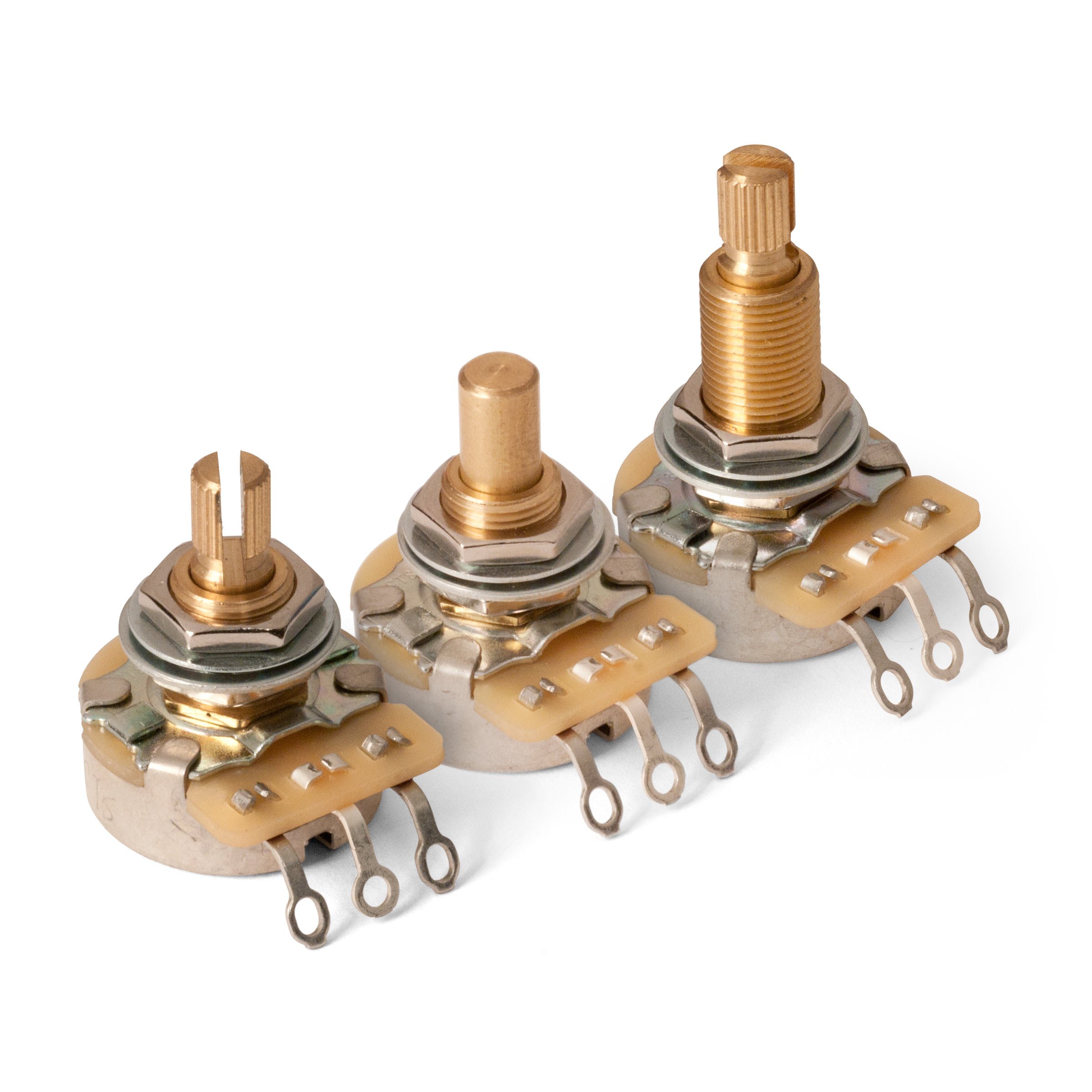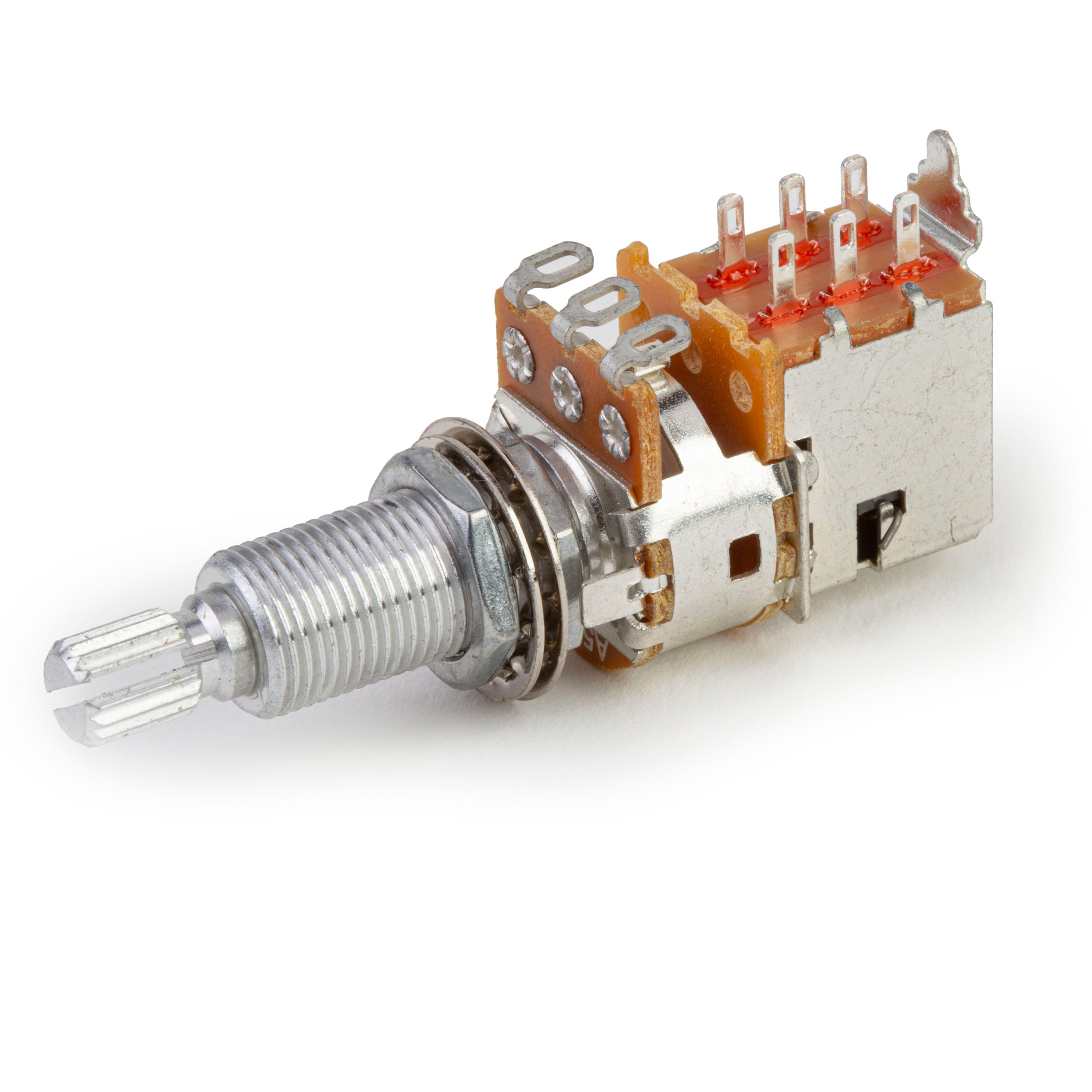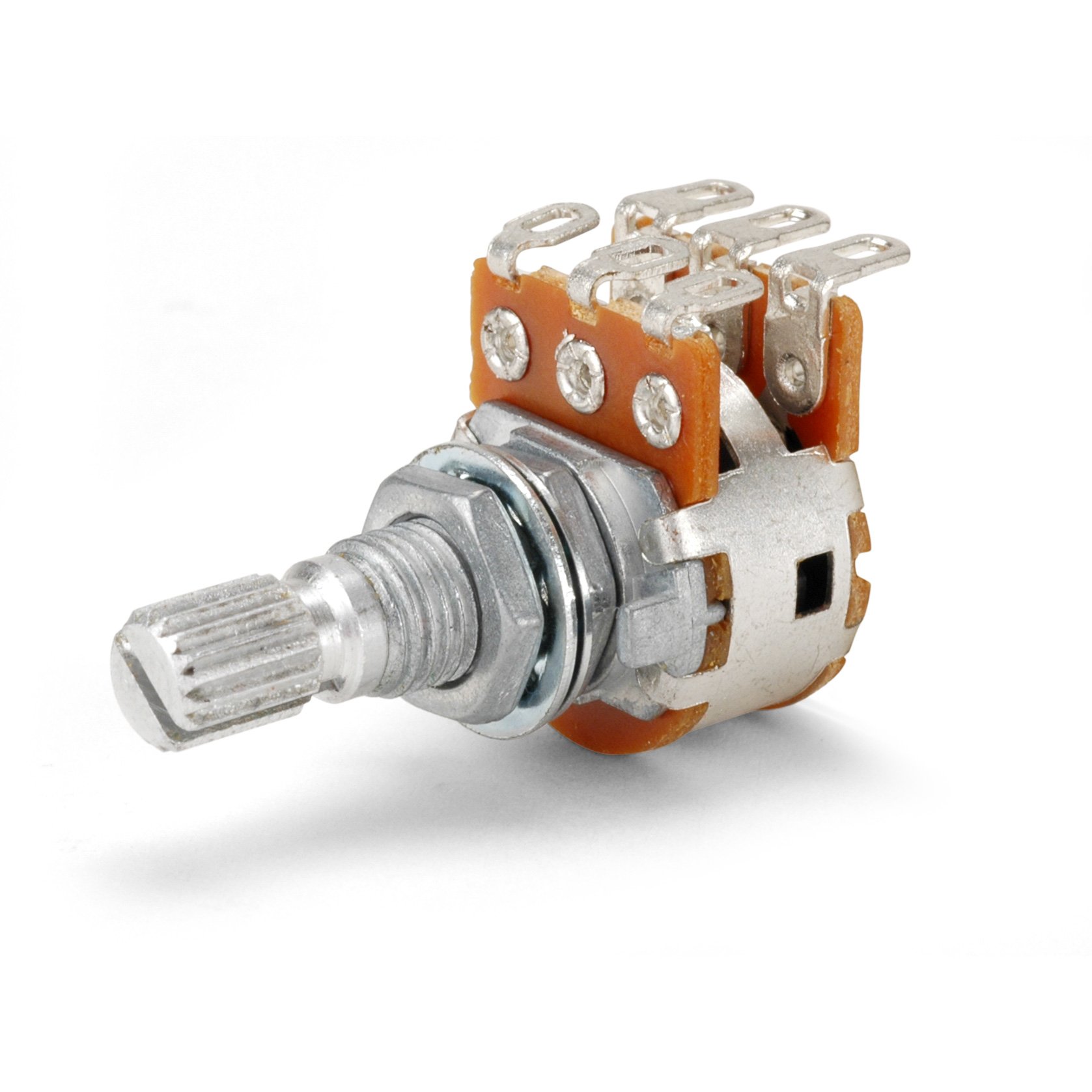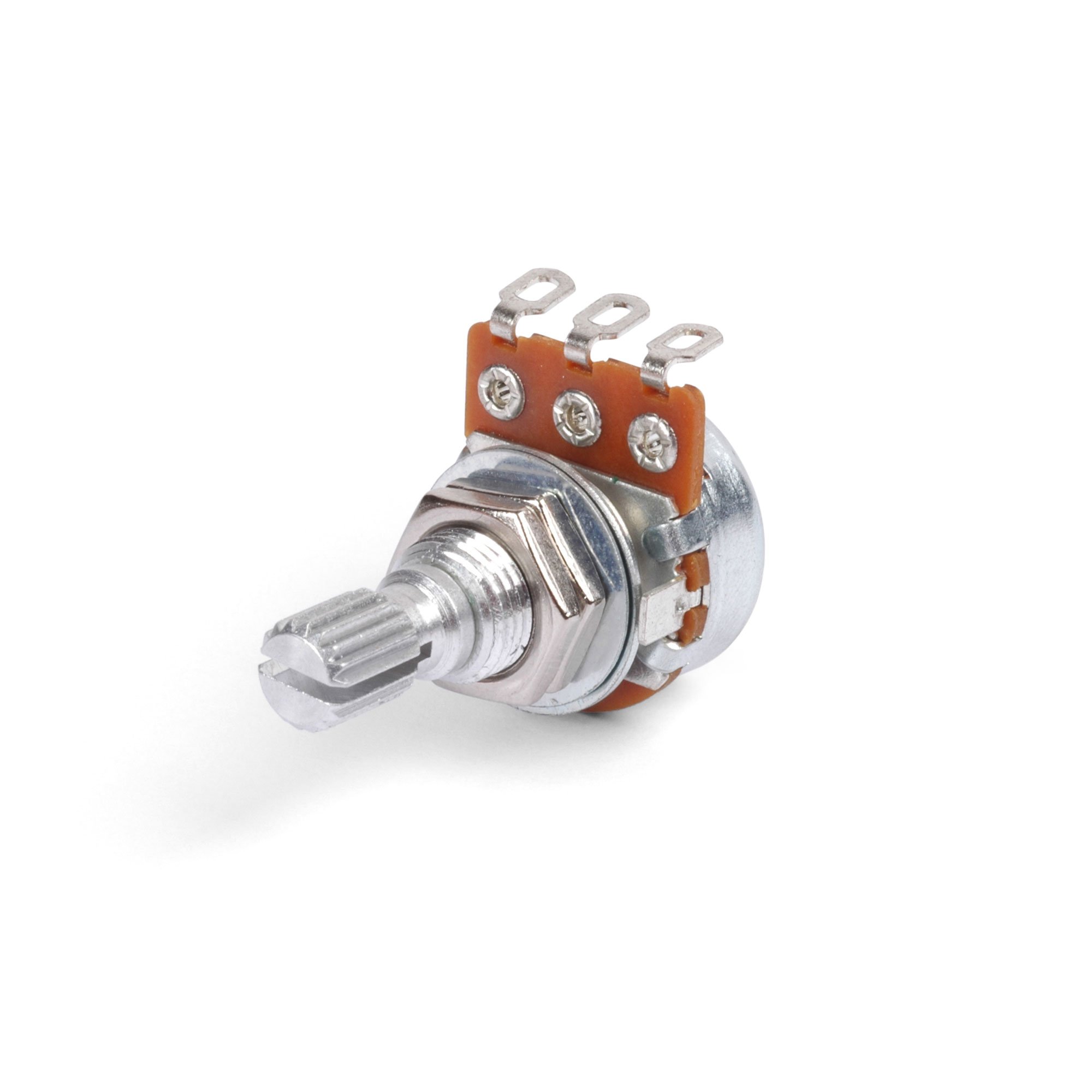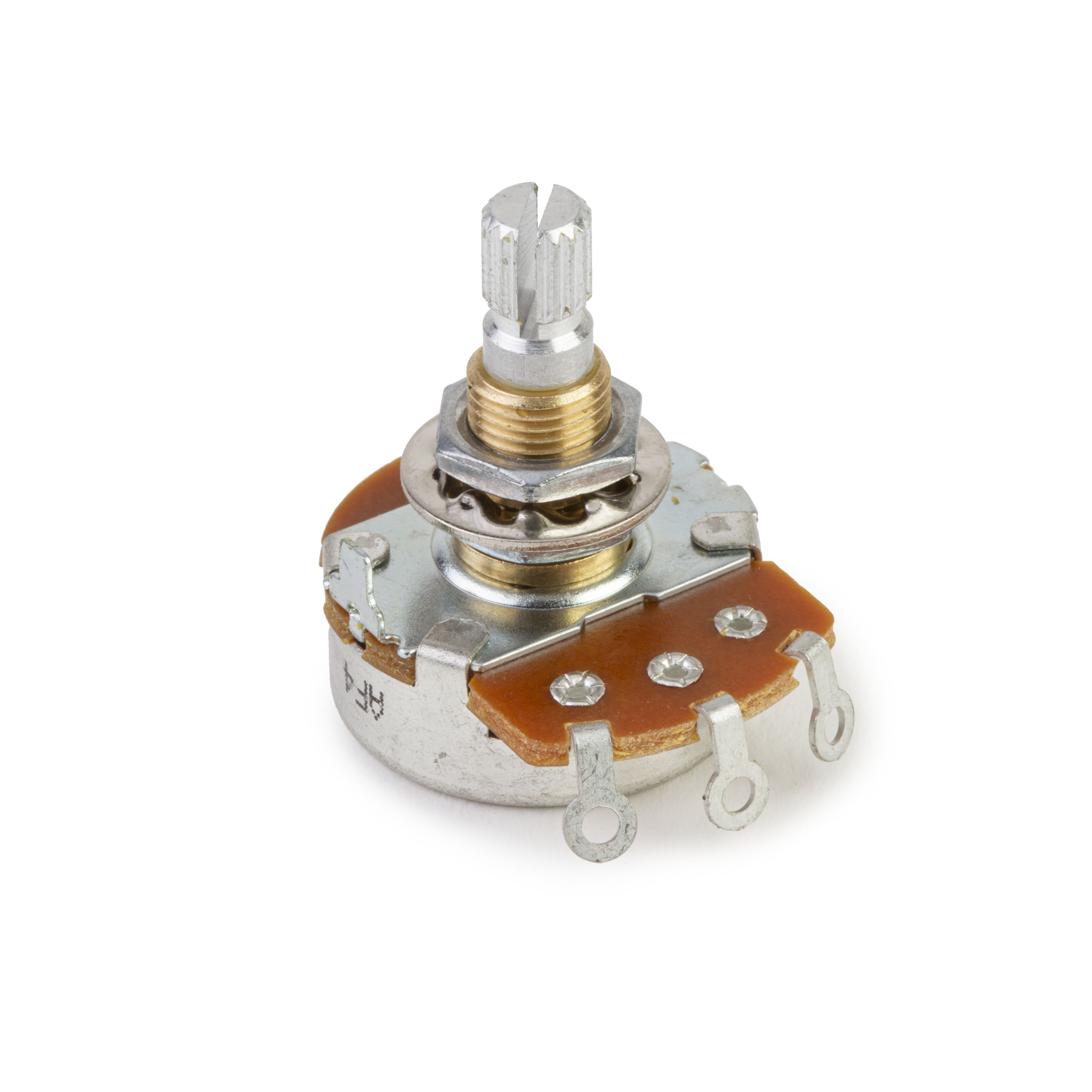Which control pot to choose
An explanation of the different control potentiometers (pots) and when they are typically used.
IN THIS ARTICLE
| • Which control pot to choose • Why add a pot • How pots work |
250K control pots are the usual choice for single coil pickups. These "K" numbers are the resistance ratings (kOhms). K is the abbreviation for Kilo, or 1,000. 1Meg-ohm is 1,000K, or 1-million ohms.
You can experiment with different pots on your guitar: higher values produce a slightly brighter tone. Lower values produce a slightly warmer tone (they remove little more of the highs). 1Meg-ohm pots are the brightest sounding.
The signal from your guitar to the amp is a mix of highs, lows, and midrange sound. Like any electrical charge, this signal follows the easiest path to ground, and the path we give it is through the amplifier.
When a control pot is added, part of that signal doesn't make it to the amp because some of the highs don't get past the pot. These highs go through the pot, and bleed off to ground. The lows aren't able to make it through the pot's resistance, so they continue to the amp unaffected.
The first to go are the ultra-highs, and the lower the value of the pot, the greater the amount of signal that can escape to ground. This is why 500K pots keep your sound brighter than 250K: their higher resistance won't allow as much of the signal to bleed off. And a 1Meg-ohm pot has such high resistance that when wide open it sounds almost like having no control pot there at all. There's no control on this pickup at all, and all of the signal is going to the amp. The sound is totally wide open, full volume, and none of the signal is held back.
Here, a metal conductor (we used a nail) has been placed across the hot and ground wires, creating a short circuit. All the signal goes through this short because it's easier than going through the amp. Nothing makes it to the amp, and there's no sound. This is what a volume control does when you turn it all the way to zero.
If we replace the nail with a resistor, most of the signal heads to the amp again (the amp's an easier path than the resistor). A small part of the signal, however, can get through that resistor: some of the highs make it through, resulting in a less bright, warmer tone.
A control pot is just a resistor: a variable resistor. As you turn it, the resistance changes, allowing more or less of the signal through. That's a volume control.
A tone control is similar, but it's wired in a spot where it only gets to affect the highs, not the whole signal. Things to remember
IN A NUTSHELL
500K control pots are the usual choice for humbuckers.
25K pots are for active systems with battery-powered preamps. WHY?
HOW DOES THIS WORK?
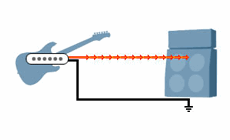
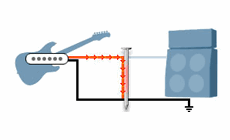
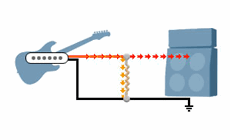
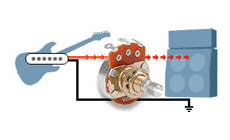
Another choice for affecting your tone is your choice of capacitor.
